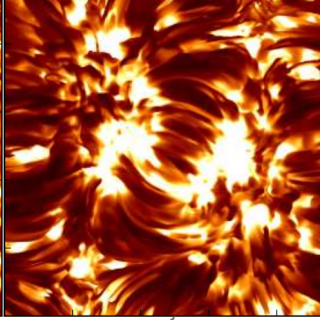Bibcode
Belluzzi, L.; Trujillo Bueno, J.
Bibliographical reference
Astronomy and Astrophysics, Volume 564, id.A16, 18 pp.
Advertised on:
4
2014
Journal
Citations
33
Refereed citations
28
Description
The linear polarization signals produced by scattering processes in
strong resonance lines are rich in information on the magnetic and
thermal structure of the chromosphere and transition region of the Sun
and of other stars. A correct modeling of these signals requires
accounting for partial frequency redistribution effects, as well as for
the impact of quantum interference between different fine structure
levels (J-state interference). In this paper, we present a theoretical
approach suitable for modeling the transfer of resonance line
polarization when taking these effects into account, along with an
accurate numerical method of solution of the problem's equations. We
consider a two-term atom with unpolarized lower term and infinitely
sharp lower levels, in the absence of magnetic fields. We show that by
making simple formal substitutions on the quantum numbers, the
theoretical approach derived here for a two-term atom can also be
applied to describe a two-level atom with hyperfine structure. An
illustrative application to the Mg ii doublet around 2800 Å is
presented.
Related projects

Magnetism, Polarization and Radiative Transfer in Astrophysics
Magnetic fields pervade all astrophysical plasmas and govern most of the variability in the Universe at intermediate time scales. They are present in stars across the whole Hertzsprung-Russell diagram, in galaxies, and even perhaps in the intergalactic medium. Polarized light provides the most reliable source of information at our disposal for the
Ernest
Alsina Ballester